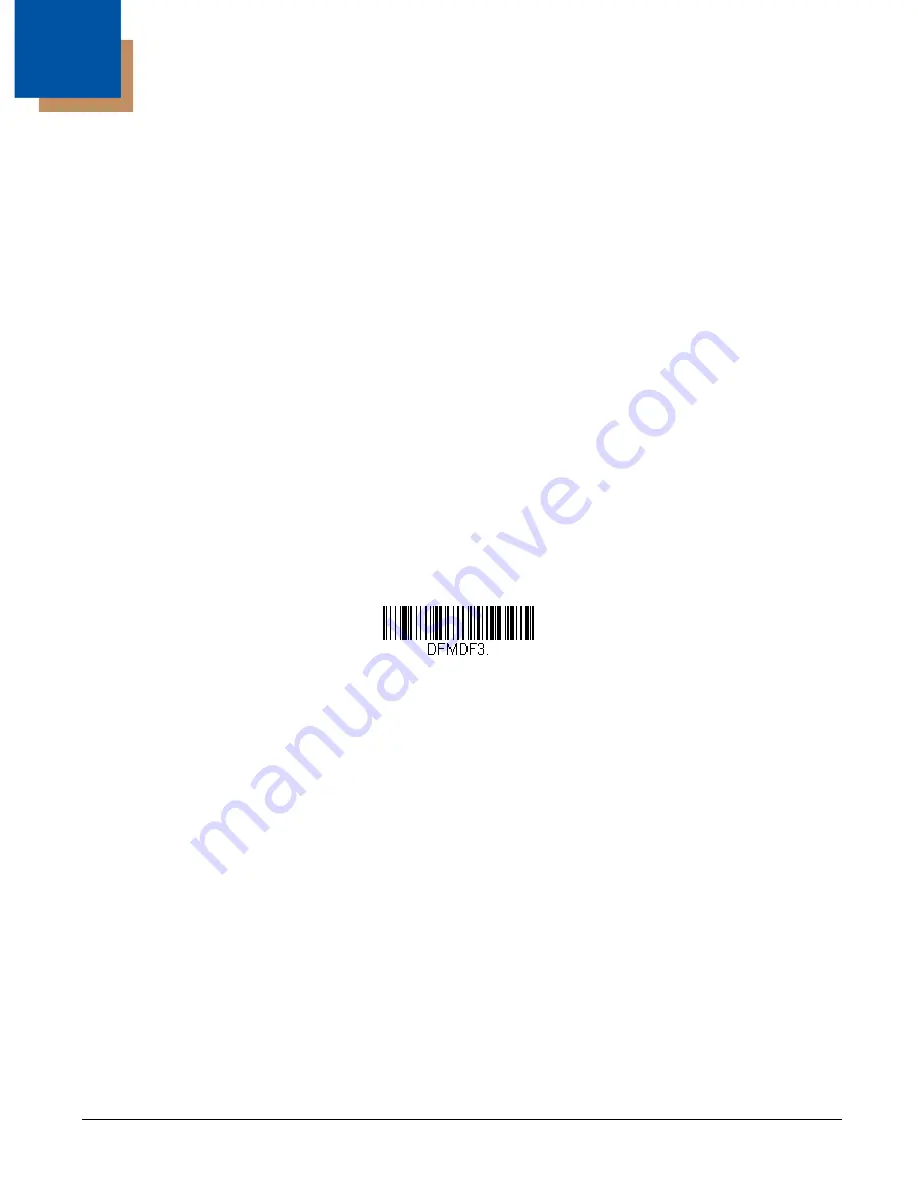
6 - 1
6
Data Formatting
Data Format Editor Introduction
You may use the Data Format Editor to change the scanner’s output. For example, you can use the Data Format Editor to insert
characters at certain points in bar code data as it is scanned. The selections in the following pages are used only if you wish to
alter the output.
Default Data Format setting = None.
Normally, when you scan a bar code, it is output automatically. However, when you create a format, you must use a “send” com-
mand (see
on page 6-3) within the format program to output data.
Multiple formats may be programmed into the scanner. They are stacked in the order in which they are entered. However, the
following list presents the order in which formats are applied:
1. Specific Terminal ID, Actual Code ID, Actual Length
2. Specific Terminal ID, Actual Code ID, Universal Length
3. Specific Terminal ID, Universal Code ID, Actual Length
4. Specific Terminal ID, Universal Code ID, Universal Length
5. Universal Terminal ID, Actual Code ID, Actual Length
6. Universal Terminal ID, Actual Code ID, Universal Length
7. Universal Terminal ID, Universal Code ID, Actual Length
8. Universal Terminal ID, Universal Code ID, Universal Length
The maximum size of a data format configuration is 2000 bytes, which includes header information.
If a bar code is read that fails the first data format, the next data format, if there is one, will be used on the bar code data. If there
is no other data format, the raw data is output.
If you have changed data format settings, and wish to clear all formats and return to the factory defaults, scan the
Default Data
Format
code below.
Add a Data Format
Step 1.
Scan the
Enter Data Format
Step 2.
Select
Primary/Alternate Format
Determine if this will be your primary data format, or one of 3 alternate formats. This allows you to save a total of 4
different data formats. To program your primary format, scan
0
using the
this manual. If you are programming an alternate format, scan
1
,
2
, or
3
, depending on which alternate format you are
programming. (See "Primary/Alternate Data Formats" on page 6-13 for further information.)
Step 3. Terminal Type
(page 6-3) and locate the Terminal ID number for your PC. Scan three numeric bar codes
on the inside back cover to program the scanner for your terminal ID (you must enter 3 digits). For example, scan
0 0
3
for an AT wedge.
Note: 099 indicates all terminal types.
Step 4. Code I.D.
beginning on page A-1, find the symbology to which you want to apply the data format. Locate
the Hex value for that symbology and scan the 2 digit hex value from the
this manual.
If you wish to create a data format for all symbologies, with the exception of some specific symbologies, refer to B8
(
If you are creating a data format for Batch Mode Quantity, use 35 for the Code I.D.
Note: 99 indicates all symbologies.
* Default Data Format
Summary of Contents for Granit 1911i
Page 1: ...Xenon 1900 1910 Xenon 1902 1912 Granit 1910i 1911i Area Imaging Scanner User s Guide ...
Page 17: ...CCB02 100BT Base Compliance Label locations ...
Page 18: ......
Page 28: ...x ...
Page 40: ...1 12 ...
Page 90: ...3 28 ...
Page 114: ...4 24 Vertical Bottom to Top Upside Down Vertical Top to Bottom ...
Page 120: ...5 6 ...
Page 184: ...7 50 ...
Page 200: ...9 2 Denmark 8 9 6 Norway 8 9 6 Spain 6 Country Codes ...
Page 202: ...9 4 ...
Page 248: ...13 6 ...
Page 263: ...Programming Chart 0 1 2 3 4 5 6 7 8 9 ...
Page 264: ......














































